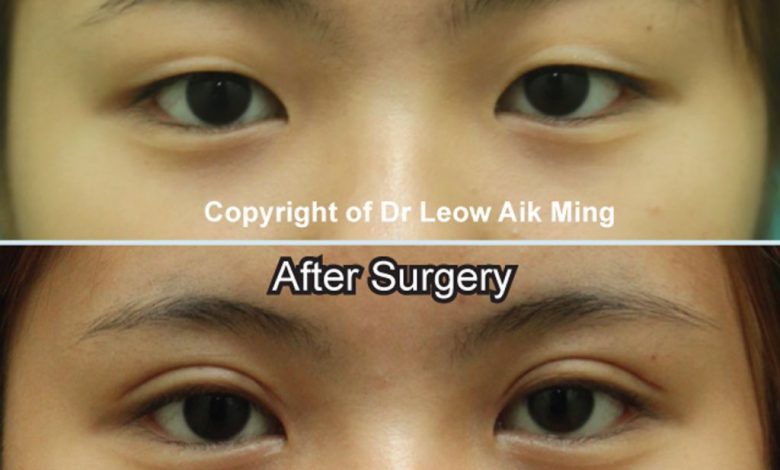

Looking Your Best
By Dr Leow Aik Ming
The presentation of eyelid creases in Asian varies from one person to another. About 50% of Asians are born with eyes that have “single eyelids or monolids,” which has no distinctive upper eyelid creases when the eyes are open. Asian eyes vary in terms of the epicanthal fold, amount of skin, fat and other important structural elements. Rarely, two different kinds of eyelid creases may present in an individual.
There are six different types of Oriental eyelid creases:
(1) Absent eyelid crease:
This condition is also known as the monolid or single eyelid crease because there is no definitive eyelid crease that separate the upper eyelid into two parts.
(2) Partial eyelid crease:
There is a crease but it is not well defined or it may not extend entirely across the eyelid. With age, the partial crease can become more defined as the skin above the crease becomes looser.
(3) Tapering eyelid crease with or without lateral flare:
A tapering crease becomes narrower toward the inner corner of the eye. Sometimes the outer part (lateral part) of the eyelid fold is wider than the central part.
(4) Hooded eyelid crease:
In this condition, an extra layer of skin droops over the eyelid crease on the outer corners of the eye causes the eye appears smaller and sometimes, sleepier. It is also commonly seen in elderly as the skin begins to droop.
(5) Parallel eyelid crease:
The inner corner of the crease does not narrow as a tapering eyelid crease does.
(6) Multiple eyelid creases:
The presence of multiple distinct skin folds in the eyelid crease.
Double eyelid surgery or Asian blepharoplasty is a cosmetic surgical procedure which aims to create a natural crease in the eyelid that appears when the eyes are opened, but not when they are closed. There are two types of Asian blepharoplasty namely the incisional (open) or non incisional (stitch) method. There is no single procedure that fits all. Therefore, the selection of the surgical method is determined by patient’s age and gender, thickness and quality of the upper eyelid skin, fat volume and unique anatomy around the eyes. Occasionally, epicanthoplasty can be incorporated with Asian blepharoplasty to change the epicanthal fold (mongoloid fold) so that the inner corner of the eye (inner canthus) is exposed. Thus the upper eyelid crease may appear longer and the eye may appear wider.
Preoperative evaluation for blepharoplasty
Communication is vital in order to achieve the patient’s goal and expected outcome. During the initial consultation, patient needs to discuss his/her goal and expectation with the plastic surgeon. Other preoperative discussions may include: (1) previous medical conditions, history of drug allergies or past surgical treatment, (2) usage of current medications, vitamins, herbal supplements, alcohol, tobacco and drug, (3) preference of anaesthesia either local or general anaesthesia.
The plastic surgeon will work closely with the patient to reach an agreement on the desirable results from the surgical procedure involved and their long term benefits. Every patient is different, therefore a specific treatment regimen is planned to suit an individual’s need.
Postoperative recovery after blepharoplasty
After the surgery there may be swelling, bruises, discomfort, irritation or dry eyes for several days that can be controlled with oral medications, cold compression, eye drops and ointment. Oral antibiotics, analgesics and topical ointment will be prescribed to reduce the risk of infection and postoperative pain respectively. Stitches will be removed 5-7 days after the surgery. The final result of surgery will appear within several weeks, but it may take up to a year for incision lines to become less visible.


